OK, I have a current obsession and it’s with the Salesforce #LowCodeLove revolution. It’s allowed a non-coder like me to manipulate Salesforce in a way that’s super helpful in creating dashboards and metrics that a lot of B2B marketers would love!

I want to talk about two separate Salesforce hacks I’ve been working on to help with consulting work:
- Multi-Touch Campaign Attribution
- Measures the impact of multiple Salesforce Campaigns on Opportunities. It calculates an “equal touch” model in Salesforce and creates Pipeline and Revenue Influence metrics to Salesforce Campaigns.
- Funnel Tracking
- Measures how leads and contacts move through multiple stages (like MQL, SAL, etc) to becomes Opportunities. Consolidates leads/contacts reporting and creates 3 V funnel metrics in Salesforce: Volume, Velocity and Conversion Rates.
And I think that’s super cool.
You might say – but Grant, we already have lots of apps from reputable vendors that do this for us – and they do a bunch of other stuff too – why should we try to do this ourselves in Salesforce using standard functionality?
Here’s why:
- Just using standard Salesforce functionality and configuring it with the new Lighthing Flows gets you very decent dashboards and metrics (see below for some initial examples): no they won’t have all the bells and whistles of a professionally made app – but they have the foundation of what you need to get started on your own.
- It’s included in Salesforce – therefore it’s free: you don’t have to spend $50K/year on something you may not need. This functionality is included in Salesforce Enterprise edition and above (it’s actually included in Prof Edition too – but it’s much more limited).
- It’s pretty simple to do: there is nothing proprietary about what they do or how they do it. It’s simple math done for you in Salesforce to make your reporting life a little easier. And you can change them yourself!
- Configuring these flows in Salesforce is a great way for you to learn more about Salesforce and once you’re comfortable building these – who knows what else you’ll make? I’d love to hear from you if you do end up making something cool, please write me a note!
- Did I mention that they’re free? 🙂 I mean you do have to configure them and worry about them (but you have to do that with an implementation of a tool as well. And I’ll show you what to do on this blog (also for free)!
What we use to configure Salesforce
If you’ve been around the Salesforce platform, you may have used the previous version of this functionality at the time known as “Visual Flows” – it looked like this:
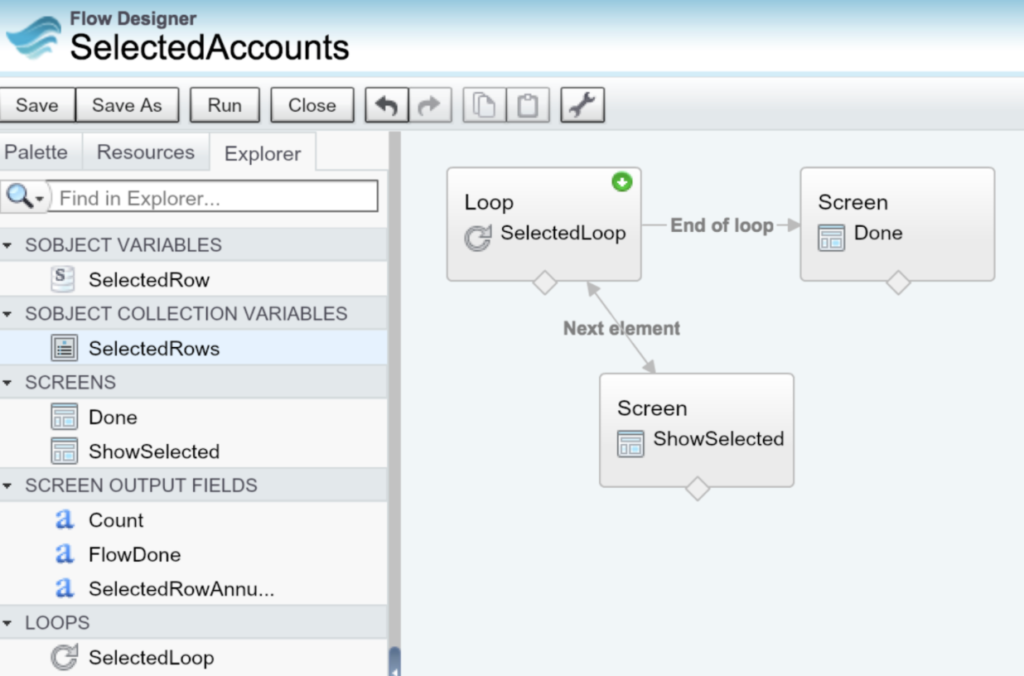
And now it looks like this:
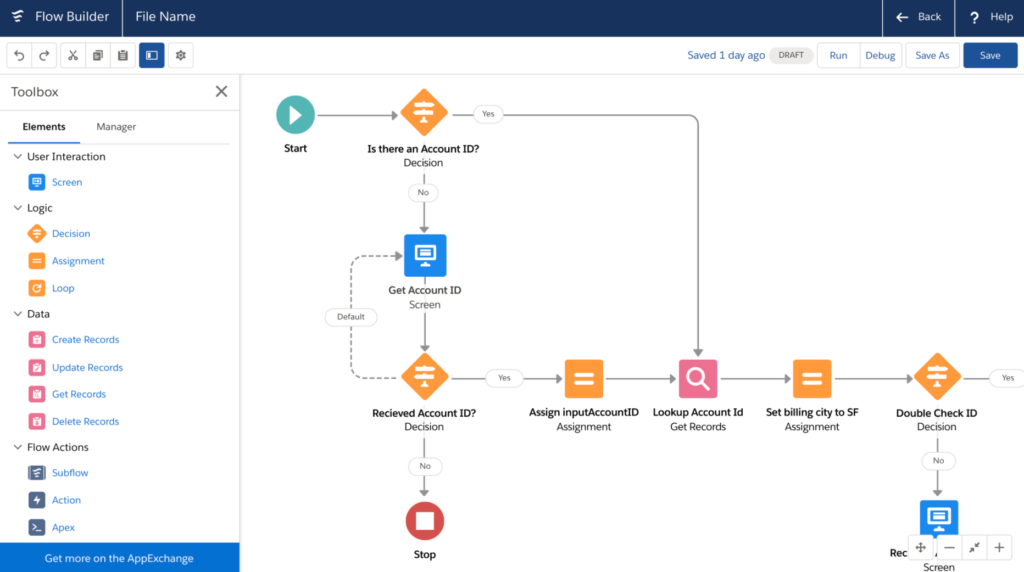
I remember playing with these workflows and finding some interesting things to do with it. But they were kinda clunky and were really only good for super simple things – otherwise they tended to break salesforce governor limits – especially if you weren’t super careful about how you put it together.
Well – if you haven’t been paying attention, Salesforce has been diligently making this feature great.
Like they really are doing a lot of things with this (better grab your popcorn – this video is 2 hours long!!!):
And this month specifically they’ve been doing a big push to get admins to start using it #LowCodeLove:
- Go Digital Fast (good article on Medium)
- Dynamic Pages and Forms (good examples of combining Flows with Lightning App Builder)
- Low Code App Development Playbook (PDF download)
So here are the preliminary results (I’m still working on this):
The Results: Multi-Touch Campaign Attribution Configuration
I’ll go into a lot more detail into the how, but the result is that we have records in Salesforce that do the attribution math on campaigns.
For every Opportunity, your Flows will look for Campaigns that:
- Fit some pre-defined criteria (Responded, and not Sent, for example)
- 2 year look-back window (because we have a long sales cycle)
- Account based – so the person who was part of the campaign did not have to be part of the Opp.
Here’s what it looks like for a single Opportunity:

You can see the multiple campaigns and the different people who participated in them and the Equal Model weights assigned to each, as well as the corresponding Sales Pipeline Amount attributed to each Campaign.
You know you did this right if the model %’s sum up to 100% and the $ values sum to the total Amount on the Opportunity.
You can then roll up all of this data across multiple Opps and take a look at what type of Campaigns are most influential:
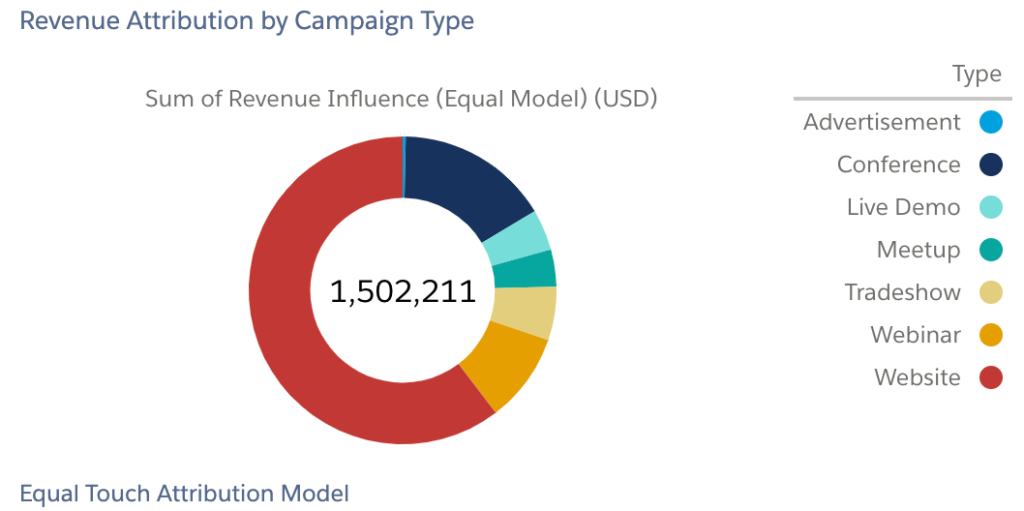
Let’s see the same data over time – maybe there are trends in which marketing channels are most effective?
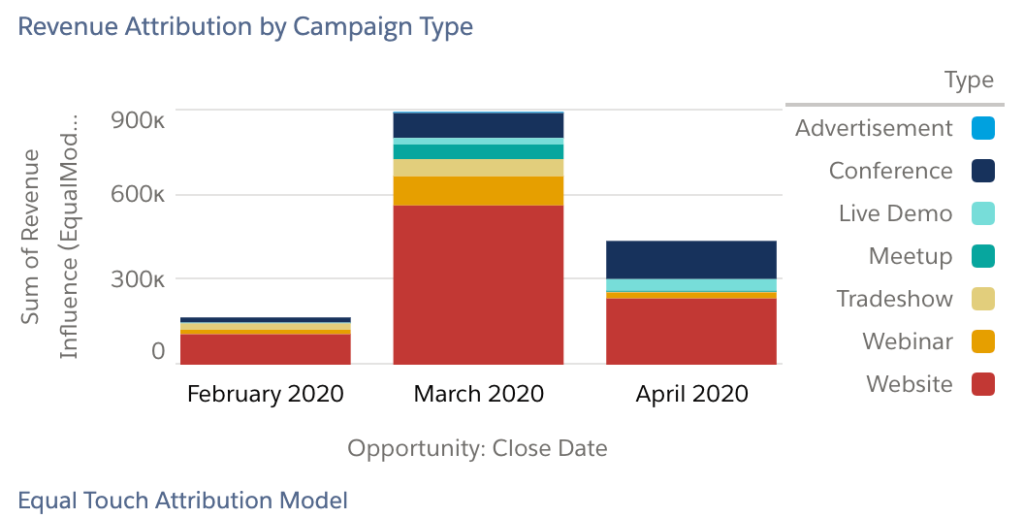
We can then roll up the same data by Campaigns and Campaign Types or Channels to see which campaigns are the most influential:
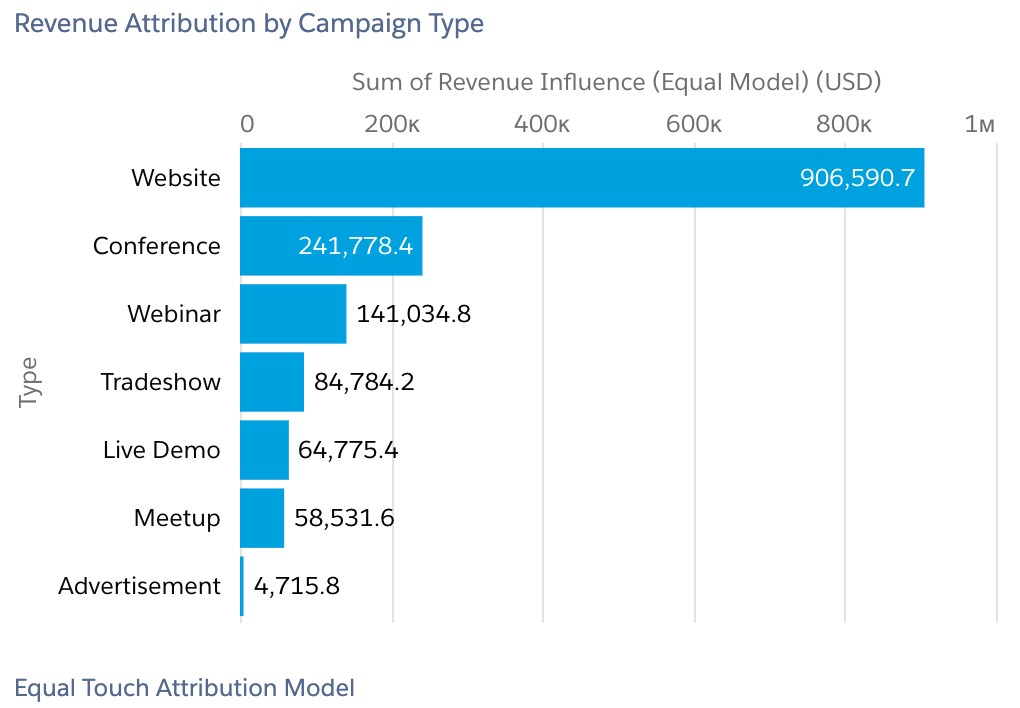
And probably the most fun versions of this are specific down to individual campaigns:
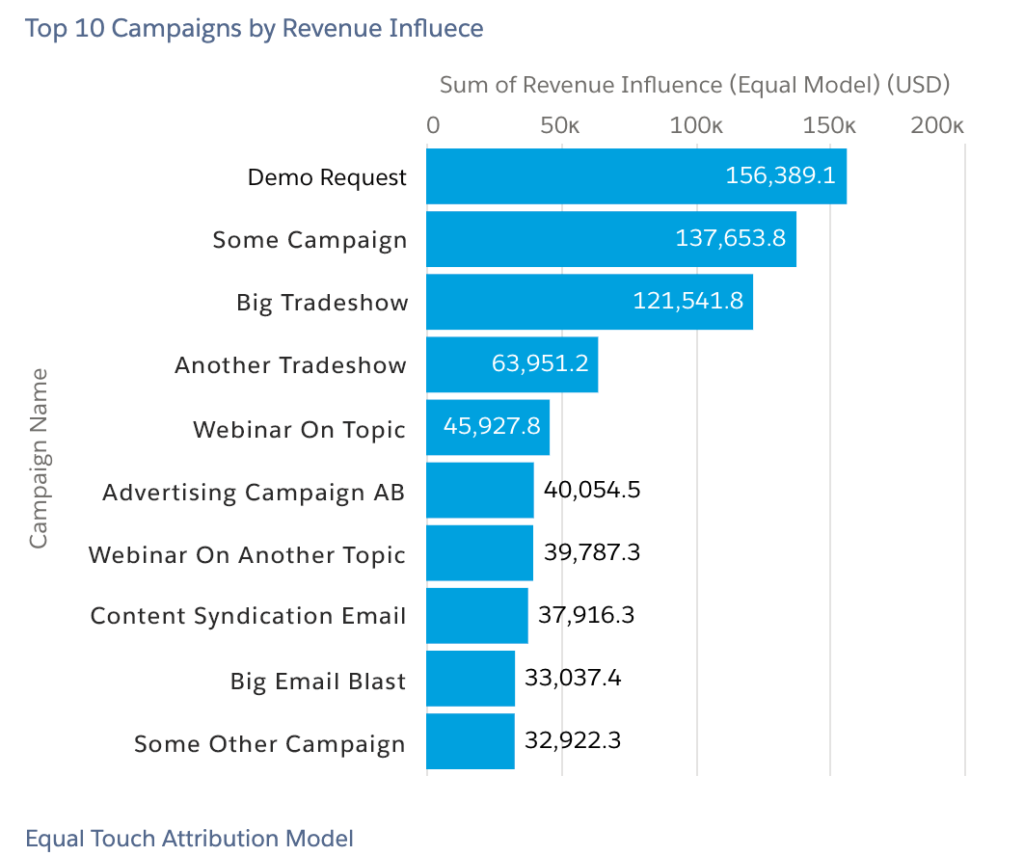
And it’s also pretty important to make this data easily accessible from the Campaign record directly. This way as marketers work on a specific campaigns they can see the influence they are having on the overall business:
Here’s what you can add to the campaign page:
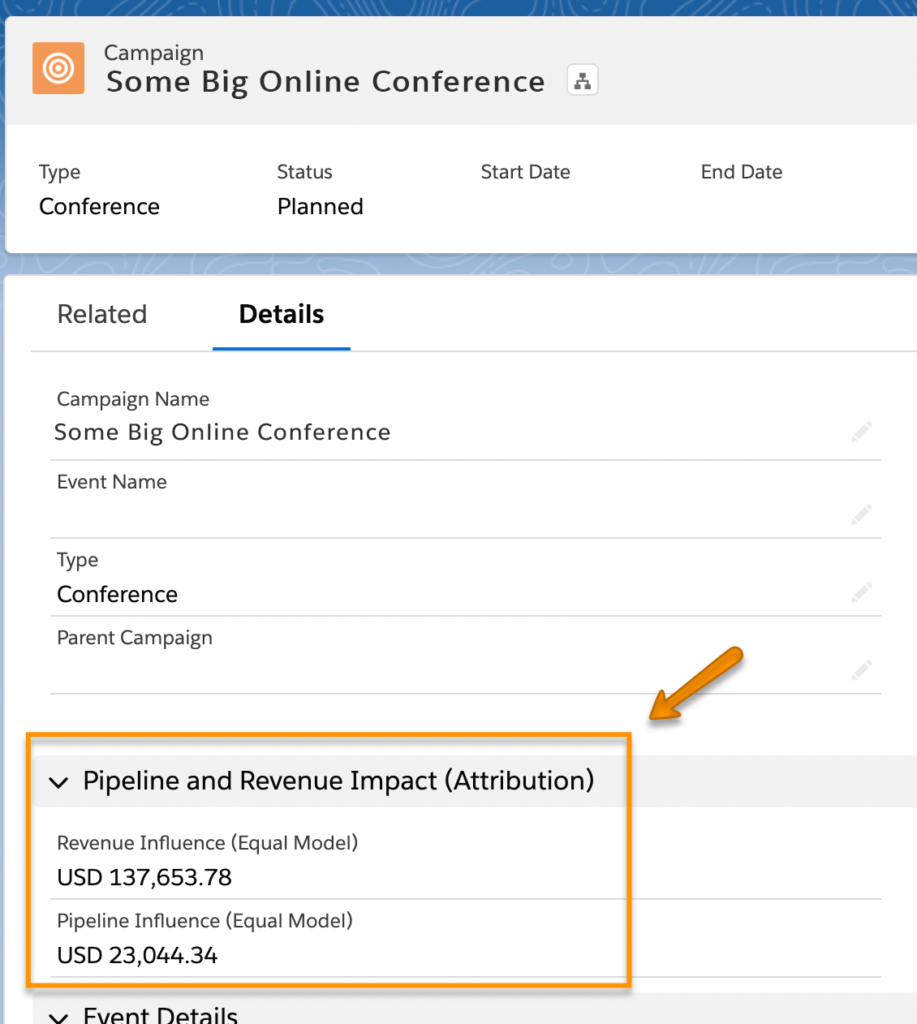
And there is also a related list that shows all the details of which Opportunities and at which level of influence is being attributed to the Campaign.
The Results: DIY Funnel Tracking App
The high-level goals for the funnel tracking app are the following:
- Consolidate the leads and contacts funnels
- I don’t want to have to run two different reports for MQLs (Leads) and MQLs (Contacts).
- Help calculate the 3 v’s:
- Volume (MQLs by Month)
- Velocity (# of days it takes to move from one stage to another)
- Conversion (% of MQLs that become SQLs)
Here’s a report of MQLs monthly – and it includes Leads and Contacts:
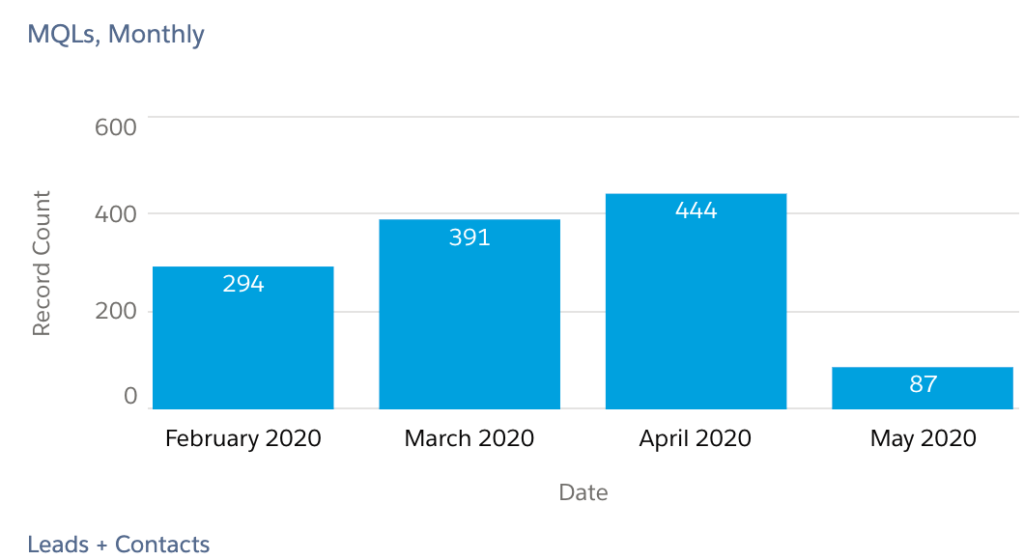
And here’s a conversion rate report:
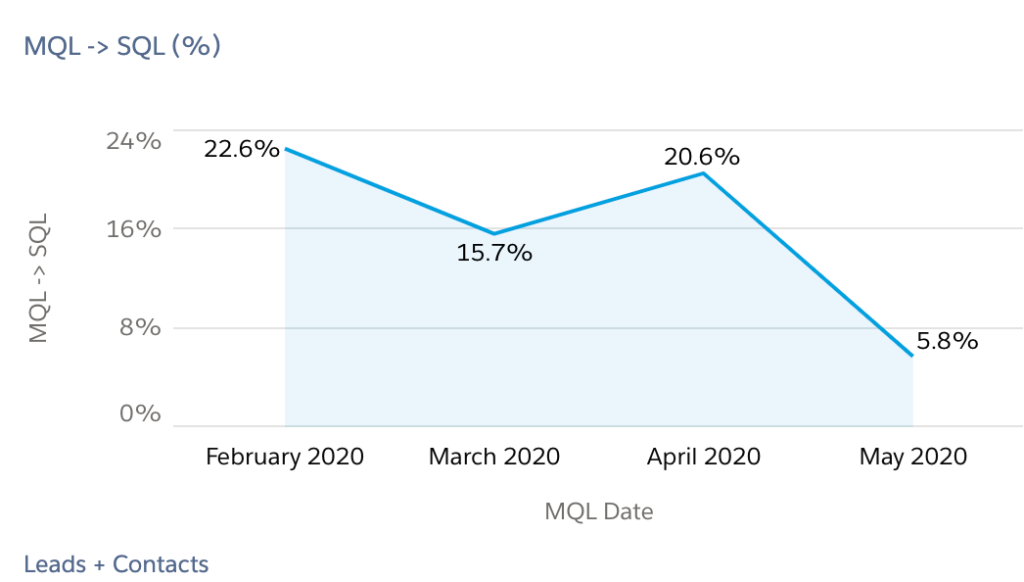
Here’s what it looks like when you click-in to the report:
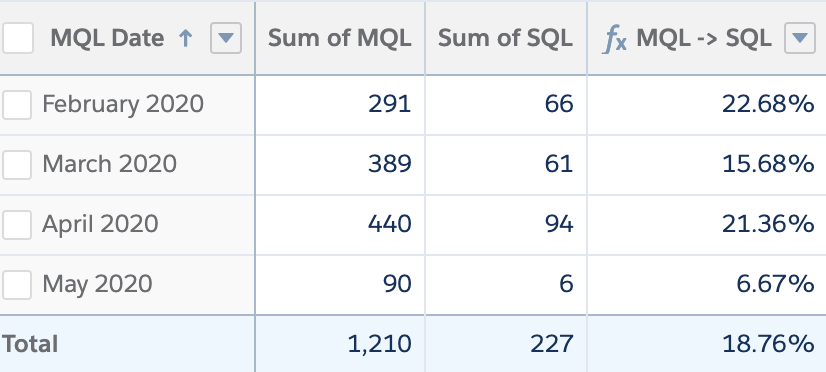
This is cohort level analysis of MQLs over time (which is why the most recent conversion rate is lower than those in the past).
What do you think?
These are the reports that B2B marketers have been asking me to create in Salesforce for years and I feel super liberated to be able to deliver these WITHOUT the need to ask for more budget.
It’s also awesome to know that I don’t need to know how to code in APEX and therefore ANY salesforce admin can continue to maintain and re-configure this functionality going forward (as long as it’s well documented I suppose).
What do you think?
Have you used the new Salesforce Flows yet? Do you have concerns about using them?
What other reports should I try to make?

